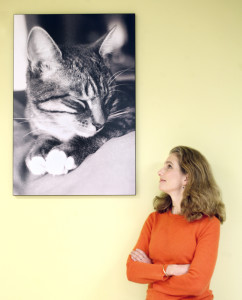The Art of the Origin Story: Putney, Inc.’s founder, Jean Hoffman
 Whether you are a solopreneur, a small business owner, or a fast growing Inc. 500 company, you need to tell a compelling Origin Story.
Whether you are a solopreneur, a small business owner, or a fast growing Inc. 500 company, you need to tell a compelling Origin Story.
In this post, you will hear a stellar example of this story genre.
Why do you need to tell a compelling Origin Story?
First, your Origin Story separates you from your competitors. Only you have your particular Origin Story. It’s what makes you unique.
Second, your Origin Story humanizes your business. Because it tells the story of who you are and why you came into being, your Origin Story taps into the business truism “People do business with people they know, like, and trust.” Your story allows people to connect with you on a more human level, rather than as impersonal organization or generic business entity.
Third, your Origin Story communicates your reason for being. When people understand what inspired you to go into business, what inspired you to start THIS business, it helps them get to know you and understand why you and your business are important to this world.
Fourth, because your Origin Story talks about The Why of your business, it helps attract talent. This is especially important with the Millennial or Gen Y employee, who place an especially high premium on working for a company that is doing something worthwhile in the world.
The Origin Story you are about to hear is from Jean Hoffman, founder and CEO of Putney, Inc., a company that produces generic medications for cats and dogs.
Putney, Inc. is not only on the Inc. 5000 list of fastest growing companies, it was also identified by Fortune magazine as the tenth best small to mid-sized company to work.
In an interview earlier this year, I asked Jean how she uses stories in her role as leader. I asked her if there were any particular archetypal, “go to” stories that she used, whether in communicating with the marketplace or with employees.
In this excerpt, she shares her favorite.
You can listen to her tell her Origin Story (about 4 minutes) or read it below. I recommend listening for maximum effect.
It is a stellar example of how to tell an Origin Story
As you listen (or read) notice the rich detail in her story that not only makes it easy to picture the scenarios in your mind, but also makes it more interesting. Notice also the human element and how that makes it easy to bond to Jean as she tells the story.
The most archetypal story here, at least in my mind, is the story of my first inspiration about starting a generic drug company for pets, which involved an old cat of mine who’d been rescued from a shelter.
We had an old cat named Dude. Dude had been adopted from an animal shelter in East New York. My husband at the time and I went to adopt one cat, and we came home with two cats because this cat Dude was just so sorry looking that clearly no one else would adopt him and clearly he would be euthanized. We just felt sorry for him.
When he first came home he was the most terrified cat. He obviously had had something terrible in his life and he was severely underweight. He spent most of his time hiding in the back of a cabinet by the dishwasher where it was warm. He didn’t even come out.
He turned into the most wonderful loyal member of our family. He would go for walks with me when my son was little. He slept with my son. He sat next to him on his dictionary when he was a little guy and a little bit of a sloppy eater, and Dude would reach out with his very dexterous paws and very gently sweep a little piece of scrambled egg over to his side and eat it.
As Dude got old, as is common in many older kitties, he developed hyperthyroidism and he had to have medication, initially once a day and as he got older his condition worsened and he had to have it twice a day. It cost $30 a month for the cat, and the medication had to be split in two which wasn’t easy. I had to get the pill in Dude, which also wasn’t easy.
I did some homework. Being in the generic drug industry I knew how to think about developing drugs. I thought there should be a cat formulation of this that is the right dosing for this little animal that is palatable so he’ll want to take it on his own and not require me to stuff it down his poor little throat, and that is affordable for people who can’t afford $30 a month. Later on it was $60 a month for my cat.
So that was really the genesis of thinking about the opportunity and the crying need for a generic drug company that would develop drugs for pets, and a company that would solve some of the dosing issues in cats which are a very under-served market. Even the Big Pharma animal health companies, they don’t develop many drugs for cats.
Isn’t this a great example of how to tell a story?
So…are you telling your Origin Story? If not, how about getting to work and either write it out or speak it and have it transcribed, and then get feedback and/or coaching around how to tweak it.
Also, if you look at the About David Lee section on this blog, you can read my Origin Story, to see another example.
For a really sweet video Origin Story about an 8 year old girl, Vivienne Harr, who decided to start a business to make a difference in the world, check out that post.
Also, if you want to get better at finding stories you can use to make your presentations come alive, check out the Google Hangout I’ll be doing with ASTD’s Juana Llorens on November 22nd
